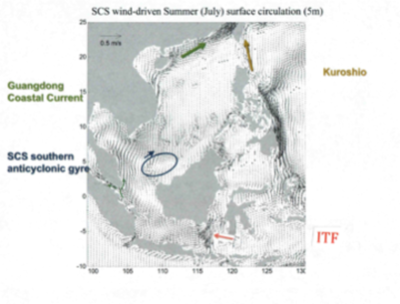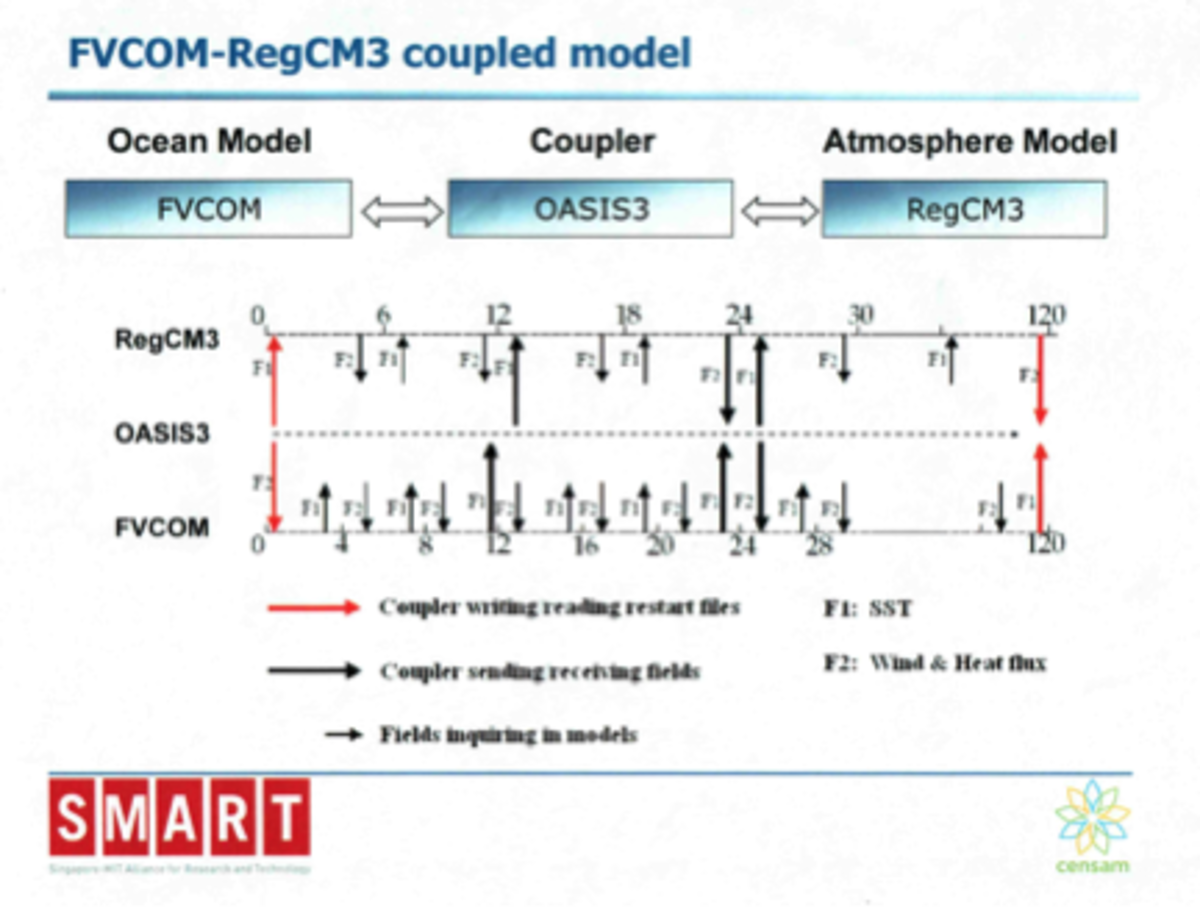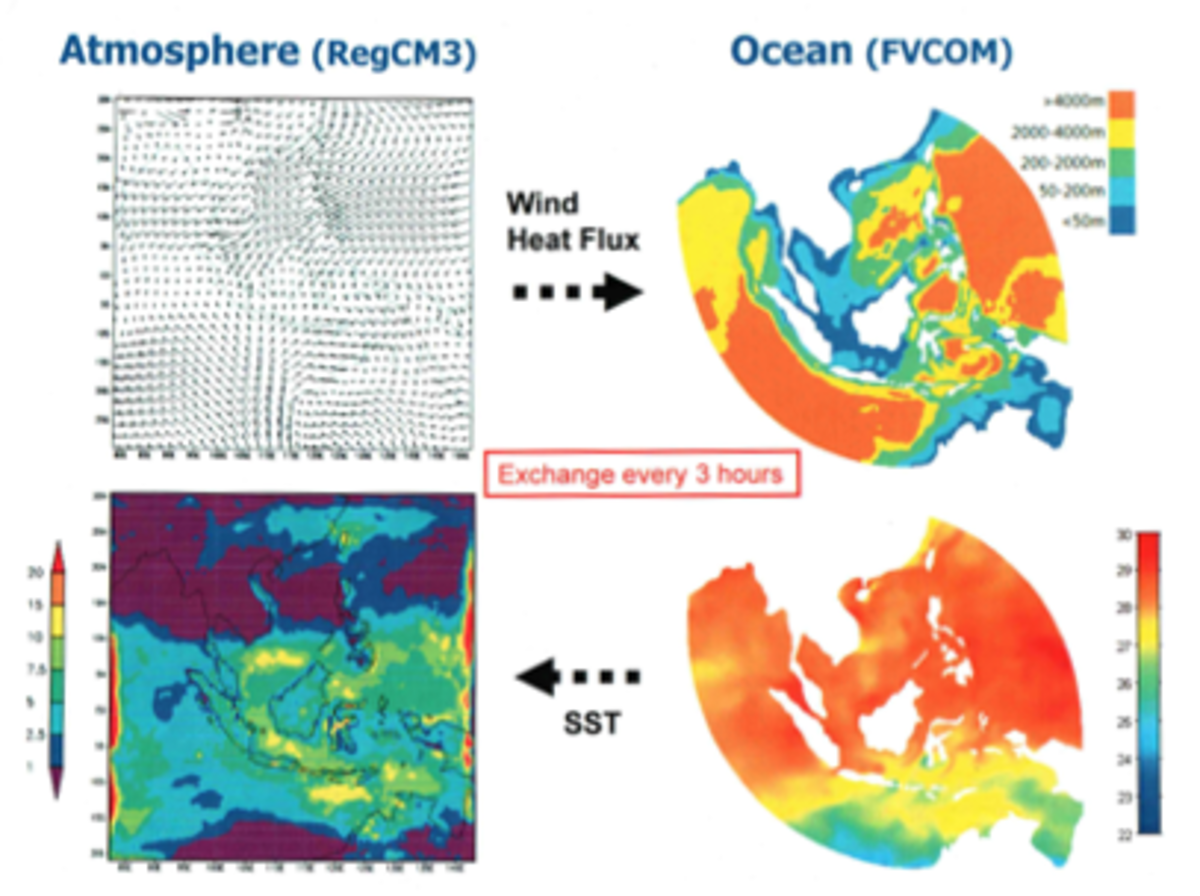Paola Rizzoli's Group
Paola Rizzoli's Group is currently working on modelling tropical ocean behaviour and data assimilation in the Singapore Strait, as well as regional climate simulations connecting the regional model of the Maritime Continent to the Integrated Global System Model (IGSM) of the JPSPGC. Prof. Rizzoli is also a consultant for the Venice Gates Project.

Website:
http://web.mit.edu/rizzoli/Public1. MODELING THE OCEAN CIRCULATION: THE TROPICAL OCEANS
Collaborators: Dr. J.Wei, Beijing University; D.D.Xu, MIT/SMART; Dr. P. Tkalich, National University of Sina
Among the various components of the Earth’s system, the ocean is arguably one of the least understood and least measured. Due to the paucity and sparsity of ocean measurements in space and time, it is very difficult to understand and quantify the multi-scale interacting ocean processes that range from small scale turbulence to world-wide ocean currents. That is why ocean models have become increasingly important to simulate these complex processes and understand their dynamics.
By and large, the ocean is driven by the atmosphere and the ocean circulation is a response to atmospheric forcing, i.e. wind stress, heat and moisture fluxes. In the tropical/ equatorial regions however the oceans are strongly coupled to the atmosphere and they exert the strongest feedback on atmospheric motions thanks to the intense sea surface exchanges. Thus in the tropical regions the interannual to decadal modes of climate variability are coupled ocean-atmosphere modes. The most famous example is the Pacific El Nino/Southern Oscillation ( ENSO ) mode. In the Atlantic ocean the most important coupled mode of variability is the interhemispheric dipole or meridional gradient mode, in which the Sea Surface Temperature (SST ) north-south gradient control the position of the InterTropical Convergence Zone (ITCZ) responsible for rainfalls or droughts over Brazil and West Africa. In the Indian ocean and Indonesian system the modes of variability are connected with the monsoon system which determines the dominant seasonal signal of the wind-driven circulation.

State-of-the-art, primitive equations numerical models have been used to simulate the Atlantic tropical circulation and, more recently, the Indonesian tropical circulation, comprising the western Pacific and eastern Indian oceans, the South China Sea (SCS) and the Indonesian Through Flow (ITF ) which is the major conduit of communication between the Pacific and Indian oceans. The model used is the Finite Volume Coastal Ocean Model (FVCOM) developed by Prof. Chen at UMass-Dartmouth and specifically designed for regions with extremely complex topography ranging from abyssal depths to coastal shelves.
2. REGIONAL CLIMATE SIMULATIONS
Collaborator: Prof. E. Eltahir, MIT; Dr. P. Xue, Michigan Technological University; Dr. Y. Sun, MIT.
The 2007 IPCC ( Intergovernmental Panel for Climate Change) Report on future climate scenarios focused on global coupled models climate simulations and projections of global climate properties, such as the average global air temperature increase, the average global sea level rising etc. The focus in the climate research community has now shifted to regional simulations and the prediction of regional climates, a much more formidable task in view of the complexity of different regions and of their differences. However regional simulations on time scales shorter than a century, i.e. over a few decades, are now of priority because of the imperative need of adaptation/mitigation measures that must be undertaken by the various nations. One such region is the SCS and its riparian countries which comprise Singapore where a regional climate initiative has recently started in the context of the SMART ( Singapore-MIT Alliance for Research and Technology) project. The initiative capitalizes upon carrying out regional climate projections coupling two regional models, the atmospheric model RegCM3 developed by Prof. Eltahir and his group and the ocean model FVCOM . The coupling has been made and long coupled simulations are presently been carried out. Future climate projections will use the methodology developed for the MIT Integrated Global System Model (IGSM) of the MIT program for the Science and Policy of Global Change based on the use of probability distribution functions.


4. THE PROTECTION SYSTEM FOR THE CITY OF VENICE
Professor Rizzoli has been a consultant on this project since 1995

The industrial conglomerate Consorzio Venezia Nuova has been charged by the Italian government with developing the engineering project and constructing the system of movable gates which will allow to protect the city of Venice from been flooded by the Adriatic sea. These floods , which have dramatically increased in frequency during the last decade, are not only responsible for submerging different parts of the city depending on their intensity. They also destroy priceless historical artifacts stored in museum basements, the palaces and houses walls submerged by the salty lagoon water and they paralyze the entire city life thus adversely affecting tourism which is the main economic resource. The phenomenon of “high water” is due to the storm surges of the Adriatic sea, the same oceanographic phenomenon of the North Sea periodically flooding London. An elaborate, 5 $ billion system of gates is now been built for the three inlets connecting the Venice lagoon with the open Adriatic sea. The works were started in 2004 and the gates are expected to be operational by 2014. The systems consists of mobile barriers that temporarily separate the lagoon from the Adriatic. They are being constructed at the lagoon inlets of Lido, Malamocco and Chioggia, the three openings in the system of islands surrounding the lagoon and through which tides propagate. In normal conditions the gates’ caissons ( pontoons ) are submerged and completely invisible. During floods, the caissons fill with air and are raised up like fans thus effectively separating the lagoon from the open sea and preventing the tide from entering. The first complete barrier in the Lido inlet has been tested on November 28, 29, 2015.